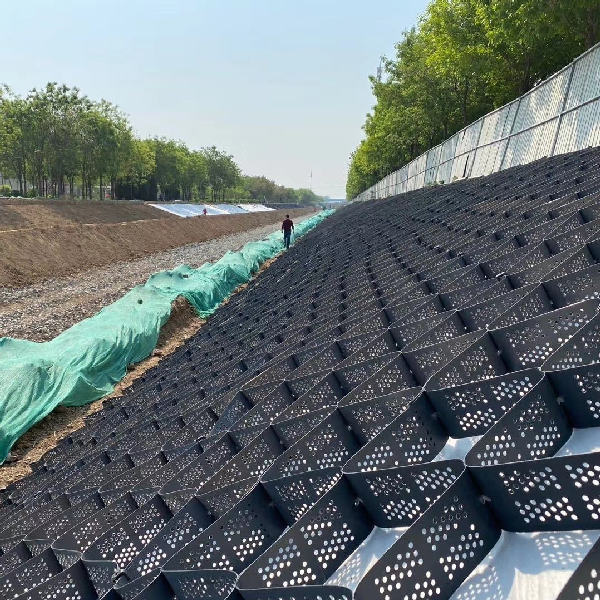Principle of restriction of geogrid on roadbed
Geogrids have excellent physical properties and have attracted much attention in the engineering community, starting from their characteristics. In some foreign academic literature, the description of a geocell is: “It looks like a honeycomb inhabited by bees, which can greatly increase the overall coherence of the soil and the stability of the slope road surface.” Its main feature is to restrict the soil in three dimensions from the plane and vertical height.
We all know that when you drive on a barren desert, the wheels will create deep potholes, and if later cars continue to drive along the ruts, the ruts will become deeper and deeper, causing them to be unable to move forward. The reason for this phenomenon is that when an external load is applied to the surface of the foundation, under the heavy pressure of the wheels, the active zone 1 is compressed and sinks, and the force is decomposed and transmitted to the transition zone 2 on both sides. The transition zone 2 is then transmitted to the passive zone 3, and the passive zone will undergo deformation and uplift without restriction. That is to say, the bearing capacity of the foundation is determined by the shear force along the sliding line and the forces in the active, transitional, and passive regions of movement. So on our urban roads, especially on asphalt roads where heavy vehicles travel, you can see many S-shaped ruts. This is because the roadbed is not strong enough to withstand the weight of heavy vehicles, and the overall coherence of the roadbed is poor. This is a typical phenomenon of lateral slip of materials on the roadbed.

This requires the use of geogrids in engineering to improve the shear resistance and friction of foundation materials, reduce displacement of foundation materials under heavy pressure, and limit the movement of subgrade materials through the three-dimensional structure of geogrids, thereby improving the overall stability of the subgrade. This is the limiting principle of geocell.
What are the advantages of geocell in filling
1. Used to stabilize railway subgrade;
Laying on railway subgrade, it increases the overall strength of the subgrade, prolongs the service life of the subgrade, reduces daily maintenance and repair costs, and significantly reduces the occurrence of faults during train operation, ensuring the safe operation of trains. It is widely used in current domestic and international railway construction.
2. Used to stabilize the roadbed of highways;
This effect is equivalent to the application of railway subgrade, which can significantly reduce the stress splitting reflected from the subgrade to the road surface. If the subgrade does not crack, the road surface will naturally not crack, especially in northern urban roads with warm winters and cool summers and large temperature differences. In winter, the asphalt pavement will crack severely, and using geogrids for subgrade reinforcement treatment is very effective.

3. Embankments and retaining walls used to bear heavy loads;
The two slopes of the river and the walls with a large inclination angle are all specific projects that use geogrids. Especially for the slopes of the river that are exposed to humid environments for a long time, they are prone to collapse in rainy and snowy weather. The honeycomb structure of the geogrid can be used to fix the soil at the inclined angle.
4. Used for shallow water channel management;
This application is also becoming more and more common.
5. Used to support pipelines and sewers;
It can increase the overall ability to withstand pressure.
6. A mixed gravity retaining wall used to prevent landslides;
Equivalent to the effect of Article 3.
7. Used for independent walls, docks, breakwaters, etc;
It can replace geogrids because geogrids are three-dimensional structures, while geogrids are planar structures.
8. Used for the management of deserts, beaches, riverbeds, and riverbanks.
This effect is obvious, and it has been widely used in Xinjiang and Inner Mongolia for many years.
Post time: Nov-29-2024

